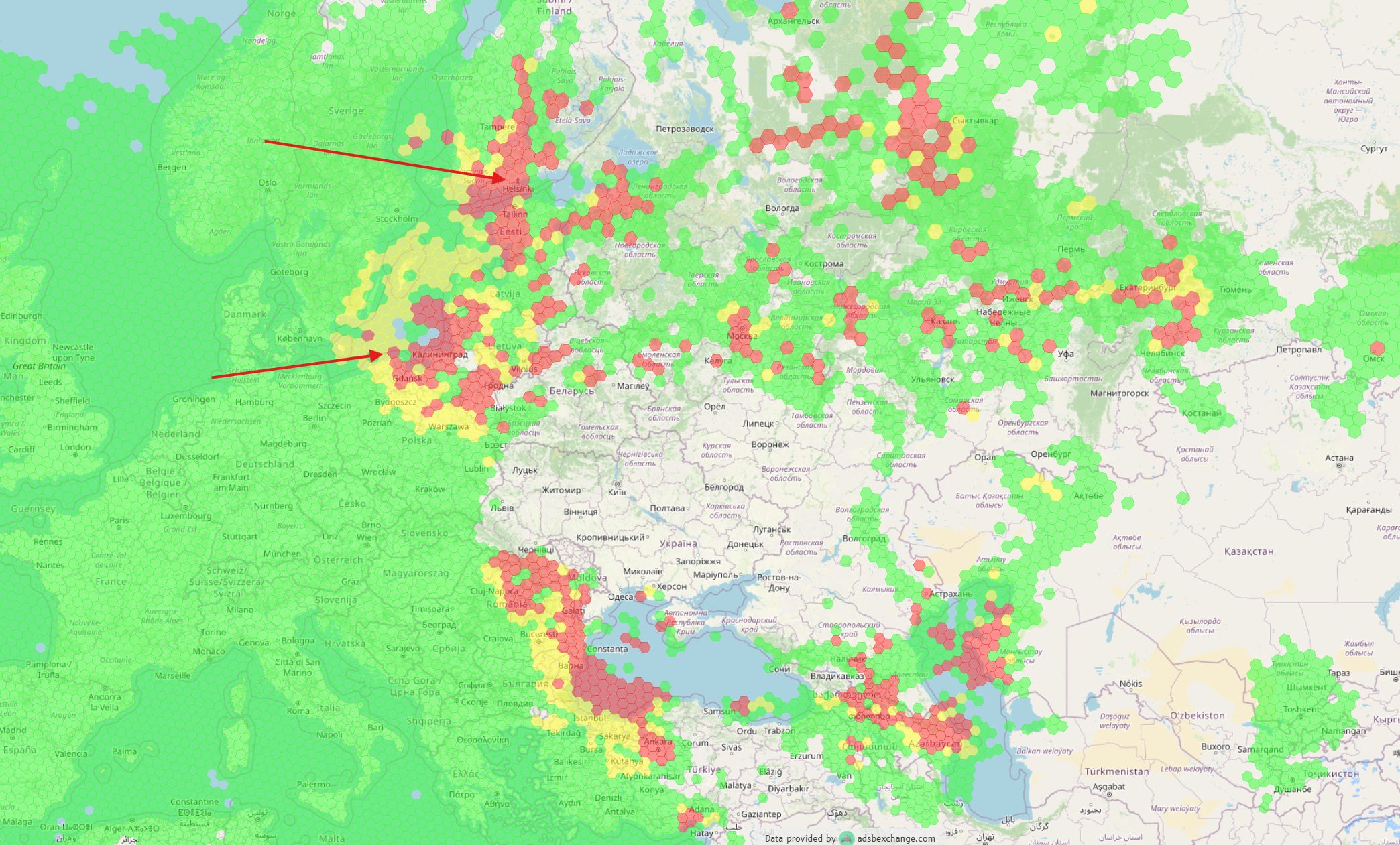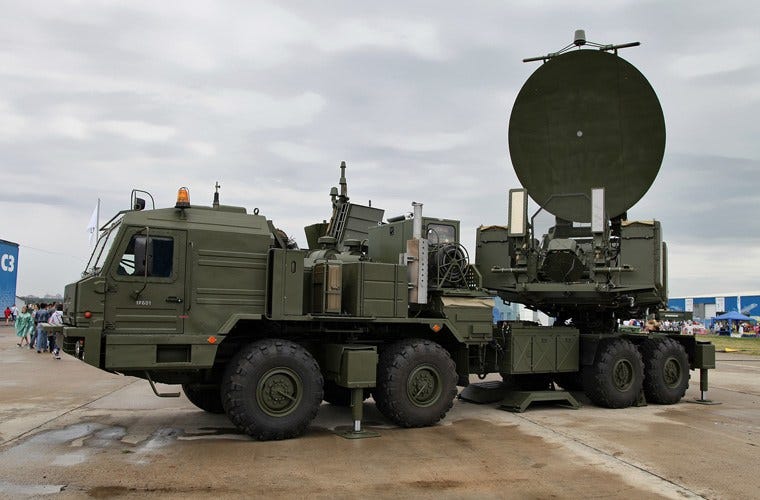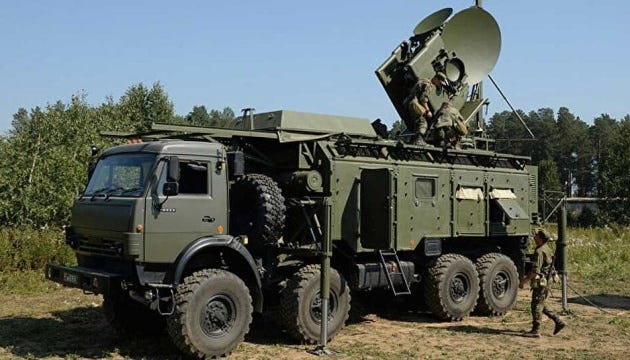How Exactly Does Russia Jam GPS?
Let's get into the technical details

In Europe at this very moment, satellites whisper, and Russia screams.
That’s the essence of GPS jamming: weak, fragile signals sent from 20,000 kilometers overhead, snuffed out by ground-based transmitters shouting louder in the same frequency bands.
Over the past two years, NATO pilots, airline captains, and ship crews have discovered firsthand what it feels like when Russia dials up the volume. The news lately is filled with reports of Russian jamming in international waters and flight corridors. Their aircraft suddenly lose navigation precision, maritime AIS tracks teleport inland, and smartphones turn into confused compasses.
But how is Russia doing it? These news stories tend to be light on actual details.
This is not a cyberattack on satellites or a Hollywood-style orbital hack.
Russia doesn’t need to break into the GPS constellation. It just has to flood the airwaves in the right direction at the right frequencies.
With the right equipment, the effects spread across borders and air corridors, sowing chaos far beyond Russia’s actual reach. The technical details matter because they explain not only how Russia manages to harass civilian and military systems across Europe, but also how NATO and its partners might counter it.
So let’s lean on my experience in surveillance radar on the E-3 Sentry and get into the gory tech details:
Why is GPS so Easy to Bully?
GPS signals are marvels of engineering but weaklings in terms of raw power.
By the time an L1 civilian signal or L2/L5 military band transmission reaches the Earth’s surface, its strength is in the ballpark of –160 dBW. That’s the equivalent of a firefly landing on a lighthouse lens during a thunderstorm. dBW is a unit of measure of the strength of a signal expressed in decibels relative to one watt. It’s simply a compact way we (in the AWACS community) represent a vast range of power levels without using enormous or minuscule numbers.
Receivers on the ground rely on exquisitely sensitive antennas and correlation techniques to pull these faint signals out of the noise.
They synchronize with the pseudo-random codes each satellite broadcasts and use timing offsets to calculate a position. The whole system works brilliantly, unless someone deliberately raises the local noise floor. Once that happens, your receiver doesn’t see the satellites at all, or worse, it latches onto impostors.
It’s useful to draw a line between two Russian methods: brute-force jamming and trickier spoofing.
Jamming is the easy part. You point an antenna, dump high-power RF (radio frequency) noise into the GPS frequencies, and drown the satellite signals.
Pilots lose lock, ships switch to dead reckoning, and drones drop out of the sky.
Spoofing is more devious. Instead of silencing GPS, spoofers transmit counterfeit signals that mimic legitimate satellites. Receivers lock onto these fake birds because they appear just a little stronger and cleaner than the real thing. Once captured, the target can be “walked” off its actual coordinates, slowly enough that onboard integrity checks don’t cry foul.
Both approaches have been witnessed repeatedly in Europe. Jamming turns off GPS entirely, while spoofing creates the illusion of functioning navigation but leads targets astray. Both can cripple timing-dependent systems in finance and telecom if left unchecked.
The most dramatic GPS disruptions in Europe map neatly to Russian forward bases.
The Baltic region sees routine interference radiating from Kaliningrad, Russia’s heavily militarized enclave between Poland and Lithuania. Aircraft inbound to Helsinki and Tallinn report losing GPS signals mid-flight.
In Scandinavia, daily outages spill from the Kola Peninsula, home to Russia’s Northern Fleet and a dense concentration of electronic warfare regiments.
Farther south, the Black Sea and Crimea generate their own GPS anomalies. Civilian pilots, maritime operators, and Ukrainian forces all log interference sourced to Russian systems around Sevastopol.
In the eastern Mediterranean, ships near Syria encounter “phantom” GPS positions that circle over airports or appear far inland, a telltale sign of Russian spoofing.
These aren’t isolated hiccups. They’re persistent patterns, confirmed by aviation safety bulletins, Eurocontrol advisories, and open-source geolocation of transmitters. At this point, European regulators treat GNSS interference as the new normal whenever an aircraft flies within line-of-sight of Russian territory.

Russia’s Toolbox of Jammers
If there’s one thing the Russian military still does well, it’s electronic warfare.
Decades of doctrine emphasized jamming NATO sensors, radars, and datalinks. The systems fielded today are a mix of legacy Soviet designs and newer distributed networks.
Each fills a different niche in the GPS denial ecosystem.
The Pole-21 system is perhaps the most distinctive. Rather than relying on a single massive transmitter, Pole-21 disperses dozens of small jamming nodes across civilian cell towers or utility masts.
Each node emits noise centered on GPS and other GNSS frequencies. By linking them together, Russia creates an RF “sprinkler system” that covers entire regions. Kaliningrad bristles with these nodes, and Crimea has hosted clusters as well.
Ukrainian strikes have confirmed the system’s presence by knocking out individual towers.
For tactical bubbles, Russia relies on the R-330Zh “Zhitel.”
This truck-mounted jammer can detect and jam a wide swath of spectrum, from satellite phones to GSM to GPS. Its purpose is to create localized denial zones for advancing units or to protect command posts from drone swarms.
With a range of tens of kilometers, it’s mobile enough to “jam and scoot,” complicating counter-battery or airstrike attempts.
Then there’s Krasukha-4, the big iron of Russia’s EW forces. Mounted on an 8×8 chassis, it’s designed to blind airborne radars like NATO AWACS or US JSTARS. Its primary targets are surveillance aircraft, but the sheer amount of RF power it pours into the ether creates collateral GPS disruption in nearby bands.
If you’re flying near a Krasukha emission lobe, your satellite navigation is going to have a bad day.
Finally, at the strategic level sits Tobol, designated 14Ts227. This isn’t a truck at all but a network of fixed satellite monitoring and interference sites across Russia.
Analysts believe at least one Tobol node operates out of Kaliningrad. Unlike Pole-21’s brute force or Zhitel’s mobility, Tobol provides selective, time-bound interference aimed at adversary satellite links.
In practice, that means Russia can create carefully shaped GPS denial zones without spraying the entire spectrum.
Technically, the mechanics are straightforward. First, you pick your target frequencies: L1 at 1575.42 MHz, L2 at 1227.6 MHz, and L5 at 1176.45 MHz, plus Galileo and BeiDou equivalents if you want to be thorough.
Next, you decide whether to broadcast wideband noise to overwhelm all signals at once, or narrowband spot jamming that zeroes in on the precise PRN codes in use.
The critical factor is power. A portable backpack jammer might deny GPS across a few kilometers. A Pole-21 cluster, with dozens of nodes high on towers, can black out areas tens of kilometers wide. A Krasukha with high-gain panels can project disruption hundreds of kilometers in the right geometry.
The effective radius is always a function of line-of-sight, antenna height, and output wattage. After all, we’re dealing with radio waves here; just a lower energy form of “light” on the electromagnetic spectrum.
Spoofing is more technically demanding. Russian systems generate counterfeit GPS codes synchronized to real satellite transmissions, then emit them slightly stronger than the authentic signals.
A receiver, always seeking the cleanest lock, will drop the genuine satellite in favor of the counterfeit. Once captured, the spoofer can drift the signal slowly to move the target off its true position.
Maritime incidents near Crimea, where ships’ GPS tracks suddenly showed them orbiting inland airports, are textbook examples.
Strategic Effects Across Europe
For commercial aviation, the implications are serious.
When an airliner loses GPS, it must fall back on inertial navigation or older ground-based aids like VOR, DME, or ILS.
In Finland, authorities actually reinstalled distance measuring equipment at eastern airports specifically to provide a backup for GPS-denied approaches. Eurocontrol issues advisories warning pilots to expect outages whenever they approach Baltic or Black Sea airspace.
Maritime effects are equally visible. AIS tracks in the Baltic sometimes show ships teleporting across land or circling in perfect loops offshore. These aren’t errors in the plotting software. They’re the results of spoofed GPS solutions feeding into navigation systems.
For commercial shipping, this creates safety risks in narrow straits and harbors. For naval vessels, it adds friction in already tense chokepoints.
Perhaps most insidious are the timing disruptions. Modern telecom networks, financial systems, and power grids rely on GPS-disciplined oscillators for precise timing. If GPS is denied for hours, the oscillators drift, and synchronization falters. That doesn’t make headlines like a passenger jet losing nav data, but it can create cascading technical failures across sectors.
Officially, Russia frames much of this as defensive.
Interfering with GNSS signals near Kaliningrad or Murmansk, the argument goes, is necessary to protect against NATO drones or precision-guided weapons.
There’s truth in that. But the convenient side effect is harassment of civilian air and sea traffic across NATO borders. A “defensive” Pole-21 cluster in Kaliningrad denies GPS to Lithuanian airliners and Finnish fishing boats just as effectively as to hostile UAVs.
The timing of certain interference events suggests political signaling as well. European leaders’ aircraft have reported GPS outages during high-profile visits.
When EC President Ursula von der Leyen’s plane lost GPS over Bulgaria, European media immediately connected the dots to Russia’s ongoing hybrid campaign.
In Moscow, the plausible deniability remains intact: “We are just protecting ourselves from drones.” The strategic message, however, is received loud and clear.
NATO and European Countermeasures
So, what can be done?
There is no silver bullet for jamming, but there are layered mitigations. Aircraft and critical ground nodes can employ controlled radiation pattern antennas, or CRPAs, that use null-steering to reject interference sources.
Front-end filters can harden receivers against high-power noise. Multi-constellation receivers that combine GPS with Galileo, BeiDou, or GLONASS provide redundancy, though Russia’s systems often jam all constellations equally.
Spoofing requires different defenses. Advanced receivers now cross-check signals across frequencies and constellations, comparing code phase and Doppler shifts for consistency. If one satellite suddenly drifts away from the pack, the receiver flags it. Inertial navigation systems, while prone to drift, provide a sanity check when GPS looks suspicious. In civil aviation, regulators have reemphasized the use of ILS, VOR, and DME, systems considered nearly obsolete before the resurgence of Russian jamming.
Perhaps the most promising development is the use of monitoring networks. Low Earth orbit RF constellations, along with crowdsourced ADS-B and RNP performance data, now map GNSS interference in near real time.
These space-based “ears” confirm the geographic footprints of Russian jammers, providing attribution even when Moscow shrugs and denies.
Russia’s GPS jamming is a hybrid tool that lets Moscow project power across borders without firing a shot.
By degrading trust in navigation and timing, Russia forces NATO militaries and civilian sectors to spend money, attention, and political capital on mitigation. It injects friction into air policing missions, complicates maritime patrols, and signals to European leaders that Moscow can reach into their airspace electronically whenever it pleases.
This is why new technologies like quantum navigation and ultra-precise motion sensors are so important. I’ve written about those before.
At the tactical level, GPS denial can shield Russian units from precision-guided munitions or disrupt the drones that have become a defining weapon of the Ukraine war. At the strategic level, it undermines confidence in the very infrastructure that underpins Western societies.
A finance network out of sync by microseconds may not seem dramatic, but in aggregate, these disruptions are destabilizing.
The Long View
If there is a lesson in all this, besides the obvious fact that the Russian military is a bunch of assholes, it is that the West became too comfortable assuming GPS would always be there.
For thirty years, it was a free global utility, always on, always reliable. Now, Russia has reminded Europe that space-based navigation is fragile. By flipping a few switches in Kaliningrad or Kola, Moscow can make billion-dollar aircraft revert to Cold War-era procedures.
But NATO is adapting. The US military fields encrypted M-code GPS, far more resistant to spoofing.
Actually, my E-3 Sentry’s M-code system was the one black box on the jet that required a higher security clearance to troubleshoot. It’s that important.
European states are investing in Galileo and alternative timing solutions. Airlines are training crews for GNSS-denied operations. But the baseline assumption of “GPS everywhere, always” has been broken. Russia accomplished that without launching a single satellite, simply by jamming the sky loud enough that no one else can hear.
The technical side of this story is clear.
Russia doesn’t hack GPS satellites. It doesn’t need to. It parks trucks, strings antennas on towers, or fires up strategic transmitters, then blasts the right frequencies at the right time.
It is cheap, asymmetric, and effective. The only surprise is that more adversaries haven’t copied the playbook at the same scale yet.
Слава Україні!




I would refer readers to GPS World on how military grade .GPS was designed to be jam resistant.
https://www.gpsworld.com/toughen-gps-to-resist-jamming-and-spoofing/
Additionally, Aviation & Space Weekly had an excellent interview with the father of the USAF GPS program titled “navigating the future” about gps jamming mitigations (it is behind its paywall.)
Some outlets have been posting hysterical headlines about GPS spoofing, using "maps"and possible airline accidents. Pilots have been trained how to use the other navigational methods. Indeed, that was the "normal" until the advent of GPS. Pilots are aware of the spoofing, so by being alert and having the right charts in their iPad/flight bags, it's more of a nuisance. It may become necessary to use multiple methods at the same time in areas like Central and Western Europe.
Question: How effective would missiles like the AGM45 Shrike be against these transmitters?